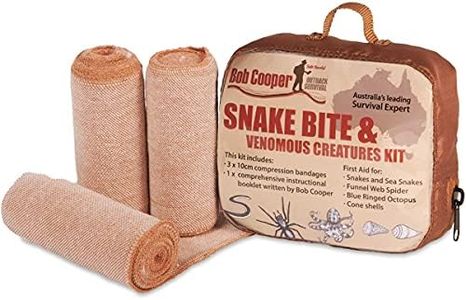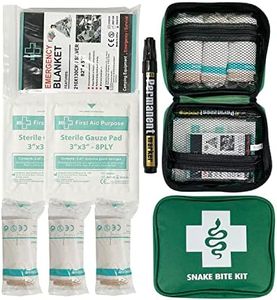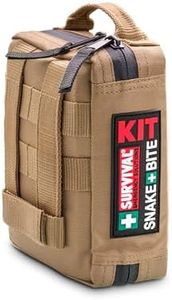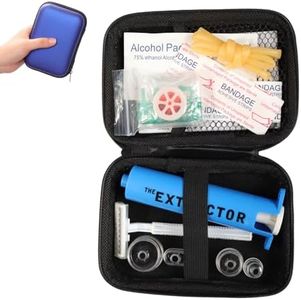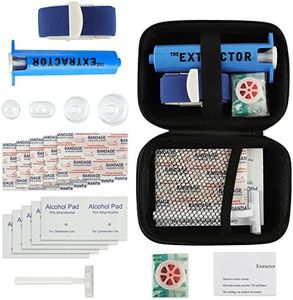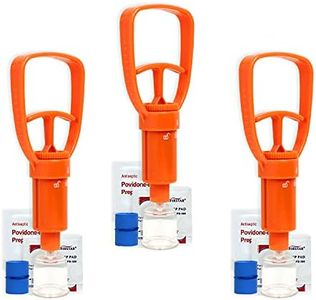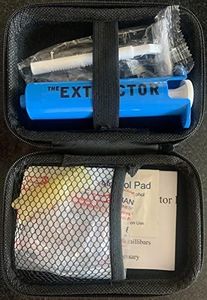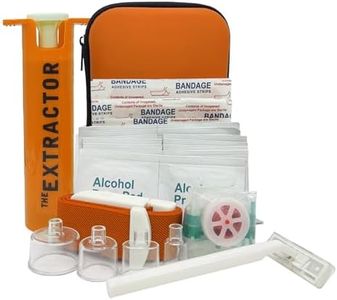We Use CookiesWe use cookies to enhance the security, performance,
functionality and for analytical and promotional activities. By continuing to browse this site you
are agreeing to our privacy policy
10 Best Rattlesnake Bite Kit
From leading brands and best sellers available on the web.By clicking on a link to a third party's website, log data is shared with that third party.
Buying Guide for the Best Rattlesnake Bite Kit
Selecting the right rattlesnake-bite kit can be crucial if you spend time in areas where rattlesnakes are found, such as hiking trails, campsites, or rural landscapes. These kits are designed to provide first-aid measures after a snakebite until you can reach medical help. While no kit can replace professional medical care, having the appropriate contents and understanding the kit's use can make a difference in emergencies. The choice of a kit depends on its effectiveness, contents, ease of use, and whether it aligns with the latest first aid guidelines. Look beyond marketing claims and always prioritize up-to-date, medically backed advice.Contents and ComponentsThe contents of a rattlesnake-bite kit usually include items like suction devices, antiseptic wipes, bandages, and sometimes tourniquets or scalpel blades. The value of what is included is important because the right tools can help manage the bite location, clean the area, and slow venom spread, but improper use can be harmful. Kits that offer only suction devices are now considered less useful by medical professionals, so a good kit should focus on essential wound care and supplies for immobilizing the bitten area. Review what each kit offers and make sure it contains basic first-aid items recommended for snakebites, such as bandages and sterile wipes, while avoiding outdated tools like razor blades or tourniquets unless specifically guided by modern first aid protocols.
Ease of UseIn a stressful and urgent situation, a complex kit is difficult to manage effectively. Kits that are easy to understand and use are crucial, as you may need to operate it quickly or under pressure. Look for clear instructions (preferably waterproof and illustrated) and well-organized components. Select a kit that you feel comfortable using after reviewing its instruction manual—practice beforehand if possible, so you’re prepared if you ever need it.
Size and PortabilityA snakebite kit should be light and compact, so it can easily fit into a backpack, pocket, or first-aid bag. Bulky or heavy kits may get left behind, which defeats their purpose. When considering different sizes, think about how you plan to carry it—whether you’re hiking, biking, or storing it in a car. Choose a kit that's convenient to bring along without weighing you down or taking up much space.
Updated First Aid GuidelinesMedical understanding of treating snakebites has changed over time. Some older kits still include items or suggest techniques (like incision or suction) that are not recommended by current medical guidelines. It's important to pick a kit whose instructions and supplied items reflect the best and most recent first aid practices. Always verify that the included guide or manual is in line with modern medical advice—your safety relies on following scientifically backed first-aid steps.
Visibility and IdentificationA kit that is brightly colored or clearly labeled is easier to spot and access in an emergency. If you’re in the outdoors or keeping the kit in a larger bag, this feature helps you (or others assisting you) locate the kit quickly. Look for a case or pouch with a high-visibility design or obvious labeling—this can save valuable seconds during a critical moment.

